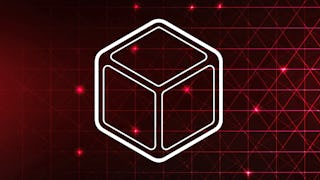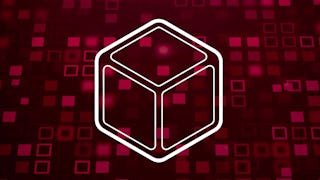The current global financial system is riddled with inefficiencies, uneven developments, and bizarre contradictions. Blockchain technology has the potential to bring about profound changes to financial services. In this course, you will learn how blockchain technology will disrupt the core functions of the financial services industry, offering individuals and organizations alike real choices in how they create and manage value.

3 days left: Get a Black Friday boost with $160 off 10,000+ programs. Save now.


Blockchain Transformations of Financial Services
This course is part of Blockchain Revolution in Financial Services Specialization


Instructors: Don Tapscott
8,680 already enrolled
Included with
(188 reviews)
What you'll learn
Identify eight functions of the financial services industry and explain how blockchain will disrupt each of these functions
Describe how blockchain will transform the roles of financial managers and the CFO
Describe the inefficiencies associated with global payments infrastructure, and the solutions blockchain technologies could offer
Identify the threats and opportunities of blockchain technology for central banks
Skills you'll gain
Details to know

Add to your LinkedIn profile
16 assignments
See how employees at top companies are mastering in-demand skills

Build your subject-matter expertise
- Learn new concepts from industry experts
- Gain a foundational understanding of a subject or tool
- Develop job-relevant skills with hands-on projects
- Earn a shareable career certificate

There are 4 modules in this course
Today’s global financial system full of inefficiencies. In this module, you’ll learn how blockchain technology has the potential to disrupt the core functions of the financial services industry, and for the better. By the end of this module, you’ll be able to describe six inefficiencies in the financial services industry. You’ll learn how blockchain technology can be leveraged to do things better, on cost, speed, risk management, innovation, and adaptability. You’ll be able to identify eight core functions of the financial services sector, and explain how blockchain can disrupt these functions—cutting out the middleman or causing them to radically change their operations for the better.
What's included
9 videos5 readings4 assignments1 discussion prompt
Human error is a common cause of accounting mistakes. Lack of transparency allows greed to flourish. People can “cook the books” to hide their wrongdoings, and double-entry accounting can’t always handle new business models, like micro-transactions. In this module, we’ll explore how triple-entry accounting on a blockchain can solve these problems. Shareholders, auditors, and regulators could access a World Wide Ledger to check a company’s health and compliance in real time. We’ll also explore how CFOs and financial management can balance the hype and the hope of blockchain technology, and make key decisions about blockchain for their enterprise.
What's included
12 videos5 readings4 assignments1 discussion prompt
The global payment system is the lifeblood of world commerce. In the Internet era, the sluggish pace, high cost, and opacity of international funds transfers, both corporate and consumer, have been a source of frustration. In this module we’ll explore the ways in which blockchain technology can improve the speed and lower the cost of global payments. We’ll consider how decentralized models of finance and the emerging cryptoasset class will leave incumbents—banks and digital conglomerates alike—scrambling to avoid obsolescence and irrelevance. With stewardship and responsible leadership, blockchain will usher in a new era of financial services that is more open, inclusive, efficient, secure, and free. If we get this right, new economic systems will emerge to generate greater prosperity for the many, rather than more wealth for the few.
What's included
6 videos4 readings4 assignments
Blockchain alone is just a tool. In order for this technology to fulfill its long-term promise, humans must lead. Rather than relying on state-based institutions, blockchain must be primarily self-governed through collaborations of civil society, private sector, government, and stakeholders in non-state networks. In this module, we discuss the idea of blockchain governance networks and explain how they can support blockchain stewardship at three levels: The platform level, the application level, and the ecosystem level. As well, you will learn about the conditions that are necessary for a blockchain-based hub of innovation to succeed.
What's included
17 videos3 readings4 assignments
Earn a career certificate
Add this credential to your LinkedIn profile, resume, or CV. Share it on social media and in your performance review.
Offered by
Explore more from Computer Security and Networks
 Status: Free Trial
Status: Free Trial Status: Preview
Status: Preview Status: Free Trial
Status: Free Trial Status: Free Trial
Status: Free Trial
Why people choose Coursera for their career




Learner reviews
188 reviews
- 5 stars
78.72%
- 4 stars
14.89%
- 3 stars
5.85%
- 2 stars
0%
- 1 star
0.53%
Showing 3 of 188
Reviewed on Nov 7, 2020
Coming from Financial Services Field -the course was quite relevant, accurare and powerful in the ideas it shared about the future of the industry and the important components thereof.
Reviewed on Mar 8, 2022
This course gives a better idea how the technology Blockchain can contribute to the Finance Industry
Reviewed on Dec 26, 2020
Very information and thorough in covering the topic of Blockchain.

Open new doors with Coursera Plus
Unlimited access to 10,000+ world-class courses, hands-on projects, and job-ready certificate programs - all included in your subscription
Advance your career with an online degree
Earn a degree from world-class universities - 100% online
Join over 3,400 global companies that choose Coursera for Business
Upskill your employees to excel in the digital economy
Frequently asked questions
To access the course materials, assignments and to earn a Certificate, you will need to purchase the Certificate experience when you enroll in a course. You can try a Free Trial instead, or apply for Financial Aid. The course may offer 'Full Course, No Certificate' instead. This option lets you see all course materials, submit required assessments, and get a final grade. This also means that you will not be able to purchase a Certificate experience.
When you enroll in the course, you get access to all of the courses in the Specialization, and you earn a certificate when you complete the work. Your electronic Certificate will be added to your Accomplishments page - from there, you can print your Certificate or add it to your LinkedIn profile.
Yes. In select learning programs, you can apply for financial aid or a scholarship if you can’t afford the enrollment fee. If fin aid or scholarship is available for your learning program selection, you’ll find a link to apply on the description page.
More questions
Financial aid available,

